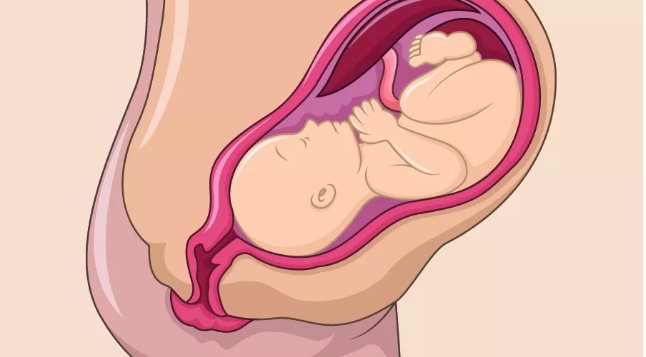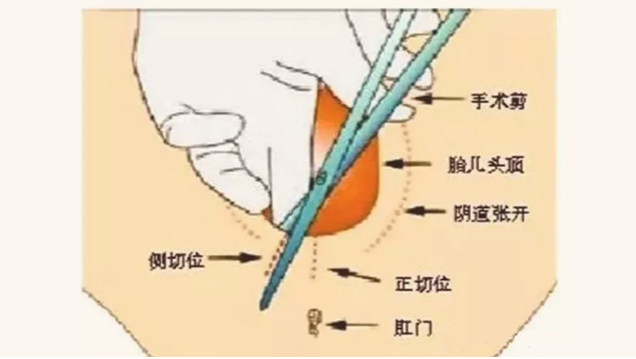
Whether online or in reality, I am often asked [is it necessary to cut the following without surgery when giving birth? ].
A word [cut] does not know how many women who are eager to give birth will tremble with fear. This horrible-sounding [cut below] is episiotomy.
Is what lateral vaginal incision?

In the process of delivery, the smooth passage of the fetal head through the birth canal is a very, very important link.
The purpose of lateral episiotomy is to [open the way] for the fetal head. Lateral incision is mostly used for primipara, because the perineum is relatively tight and the vaginal opening is relatively poor during the first delivery, so the proportion of lateral episiotomy will be relatively high.
When it comes to having two or more children, the journey will be smoother and the proportion of lateral incisions will be lower.
Lateral episiotomy is a common operation in obstetrics.
During vaginal delivery, sometimes because the fetus is too large (the biparietal diameter of the fetus head is large or the fetus is overweight), the fetus suffers from severe distress during delivery or the pregnant mother has heart disease and cannot bear the overwork and high pressure caused by long-term delivery.
At this time, it is necessary to enlarge the caliber of the birth canal through lateral episiotomy so that the fetus can be delivered quickly.

This is the schematic diagram of lateral episiotomy. If it is straight to the anus, it is called perineal middle incision, tangent or straight incision, and oblique to one side is lateral episiotomy.
Side cuts are often made at 5 o’clock, and the incision is usually only a few centimeters, which is far from what everyone imagined [cutting a big knife].
Is there any adverse effect on what after cutting?
Compared with cesarean section, the size of this lateral incision wound and its impact on the body are still much smaller.
Moreover, there is no need to fast or stay in bed absolutely after lateral incision. Compared with surgery, daily activities recover faster. The first day after lateral incision feels very heavy. After all, it has something to do with anesthesia.
You may have heard some misinformation. This lateral incision is really not a little trick made by doctors to increase what’s income, but one of the optimal choices made to reduce risks and complications during childbirth.
During labor, if the head or body of the fetus is too large, it will cause difficulties in delivery, not only prolonging the time, but also causing more serious damage to the body of the parturient.
If the birth canal is not enlarged through lateral incision, not only is the fetus easy to die of hypoxia due to failure to deliver in time, but the parturient will also cause pelvic floor muscle damage or even fracture due to the long-term compression of the fetus on the pelvic floor.
Once the pelvic floor muscle is seriously injured or broken, many complications will come after delivery.
For example, stress urinary incontinence, uterine prolapse, vaginal relaxation, etc., which one casually can cause a serious decline in the general quality of life and sexual life after delivery.
Therefore, a seemingly violent side cut actually shortens the delivery time, reduces the damage to perineum and pelvic floor muscles, and protects the quality of life of the parturient after delivery.
After all, if the pelvic floor muscle is broken, healing will be a slow and huge project, and fibrotic lumps may appear after healing, causing foreign body sensation during sexual life.
If the healing is not good, stress urinary incontinence will easily occur, which will make people sneeze, run two steps or even urinate with a laugh.

Which situations require side cutting?
-
The baby’s body is relatively large, the fetal head is not in the right position, and it is difficult for the fetal head to come out. Sometimes some parturients shouted because of uterine contraction pain, and used up all the strength needed to give birth to the child in advance. At this time, lateral incision is needed to help.
-
Older parturients over 35 years old, or patients with high-risk pregnancy. For example, hypertension and heart disease parturients are not suitable for exertion and need to end the labor process as soon as possible.
-
The parturient’s vagina is tight and small, or the perineum elasticity is poor, which cannot make the fetal head pass through. When vaginal inflammation causes perineal edema and tissue extensibility becomes poor.
-
There are abnormalities in the labor process. For example, the fetus shows signs of hypoxia, the fetal heart appears too fast or too slow, and when the delivery needs to be finished as soon as possible, as well as when forceps midwifery or fetal head suction midwifery needs to be performed, lateral incision is required, otherwise forceps what cannot be performed.
In fact, in recent years, many obstetricians have also changed the concept of cutting a knife, because even if only one knife is cut, it is harmful.
So now in the process of delivery, as long as it is not necessary, medical staff will try not to perform lateral incision.
Don’t want to cut sideways, can you do some what?
1. Control your weight to avoid excessive weight gain.
Obesity can cause the fetus to be too large. Moderate exercise and outdoor activities are also required during pregnancy.
During pregnancy, we can choose some mild aerobic exercises, such as walking. Take a stroll every day to make your mood better.
2. Stabilize your mood and prepare yourself physically and mentally.
Don’t scare yourself, you are full of fear before giving birth. Listen to the arrangement of doctors and midwives, maintain physical strength, learn the correct exertion method, and increase muscle strength.
At the same time, relax your mood, avoid the generation and accumulation of bad emotions, crying and shouting are not what’s use in giving birth to children, or wait for the arrival of the moment of childbirth with a relaxed and happy attitude.
3. Communicate with your doctor in advance
Prenatal examination and evaluation should be done in advance, and communication with doctors should be done before delivery. Natural delivery can be required without special circumstances and excessive intervention should not be made in the delivery process.
After side cutting, need to pay attention to what?
Don’t do large-scale movements after lateral cutting to avoid wound cracking. Pay more attention to rest, and can take the lateral position to temporarily avoid lateral cutting and exerting force on one side.

Postpartum lochia is easy to pollute the wound and can be washed every day to prevent infection. Sanitary napkins and parturient pads must be replaced in time to keep perineum dry and breathable as far as possible.
Pay attention to diet and eat less irritant food. Pay attention to balanced nutrition and eat sufficient fruits, vegetables and cellulose to prevent constipation.
Side cutting is not a scourge. Never be knocked down by your own fears before facing the enemy.
No matter in what, safety is the first priority, especially in obstetrics and childbirth, the safety of adults and children is the first consideration of doctors and the most hope of all of us.
